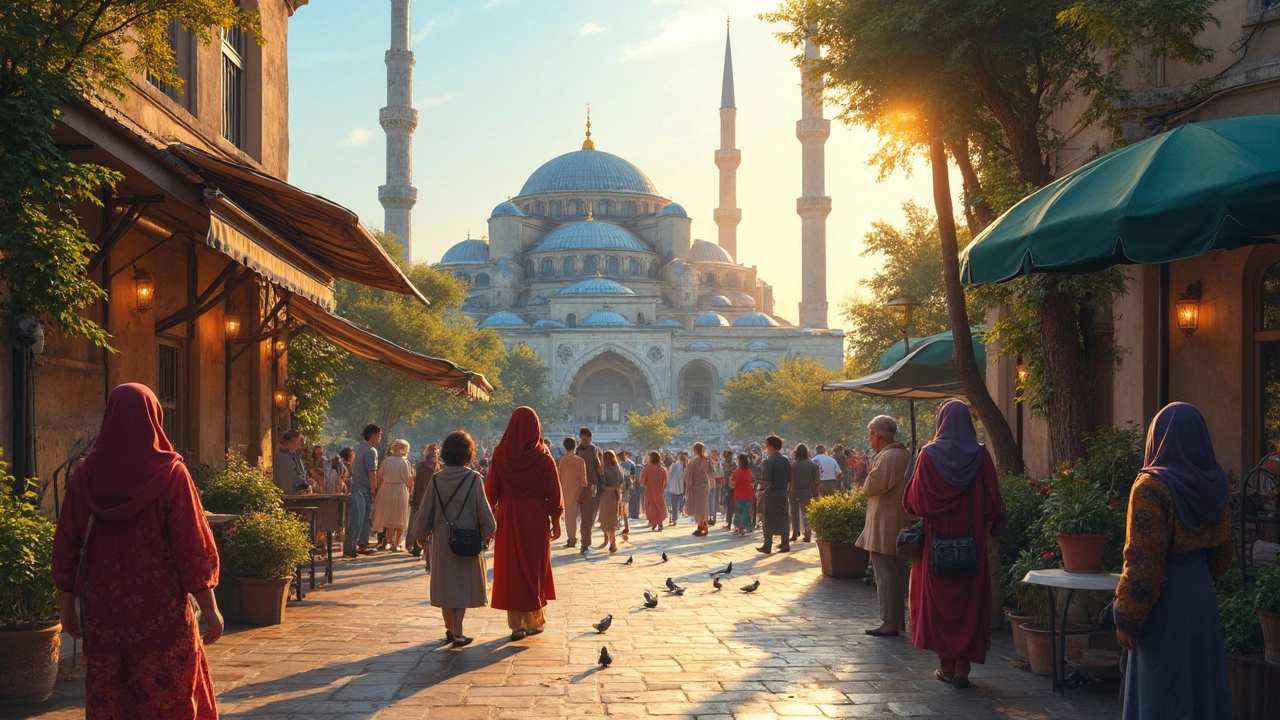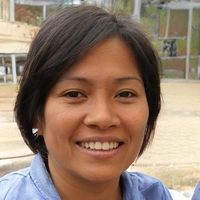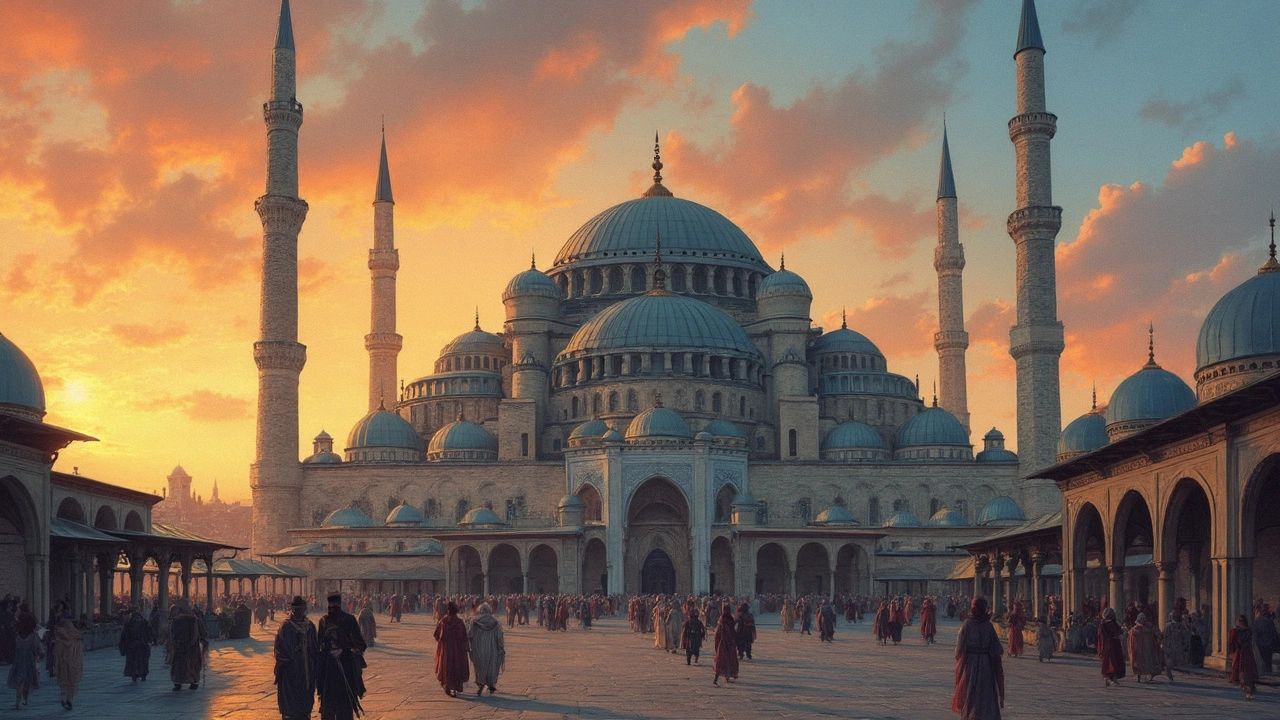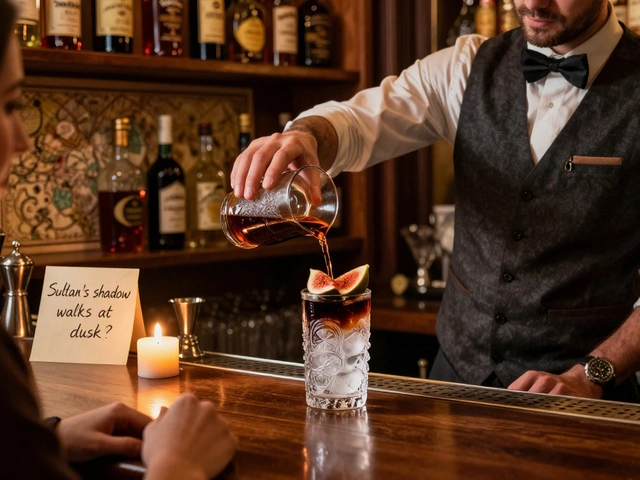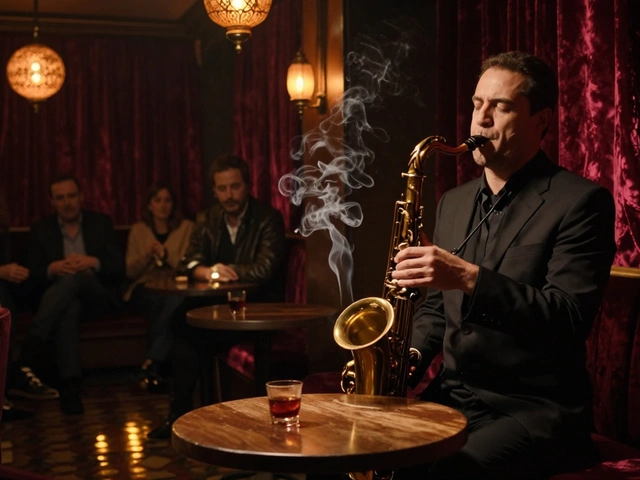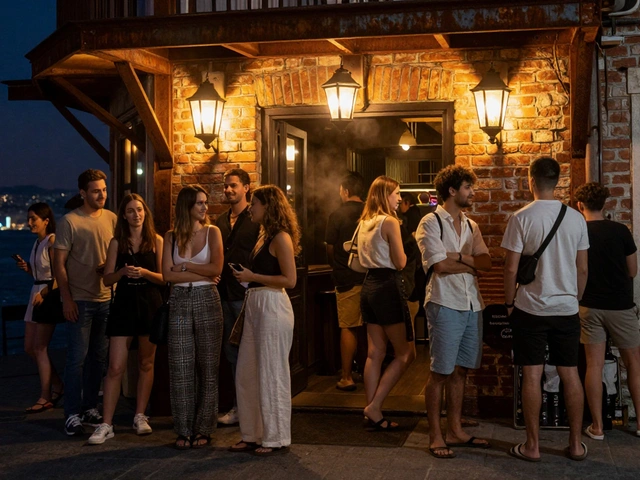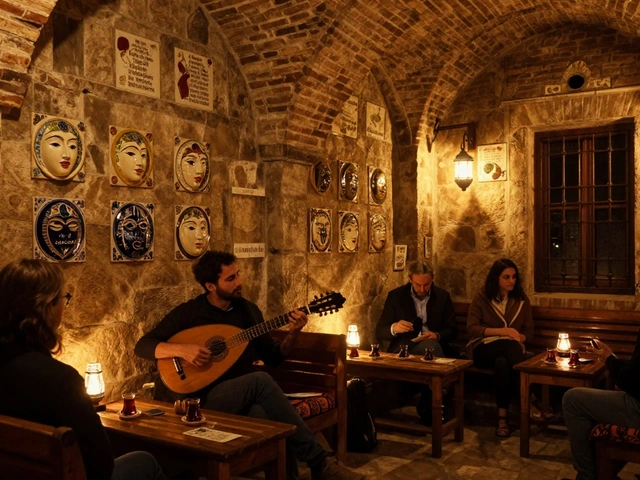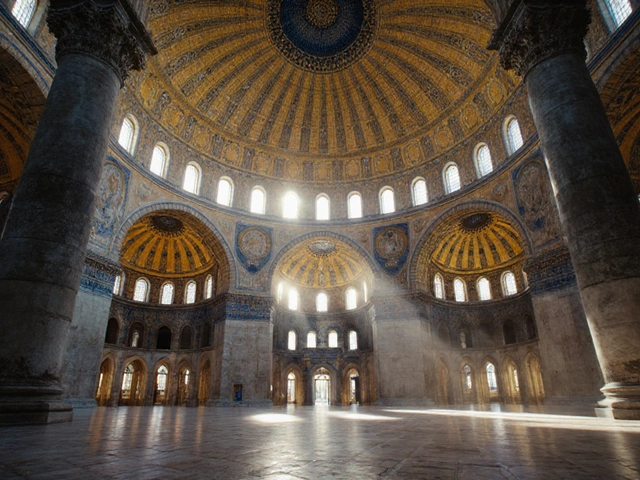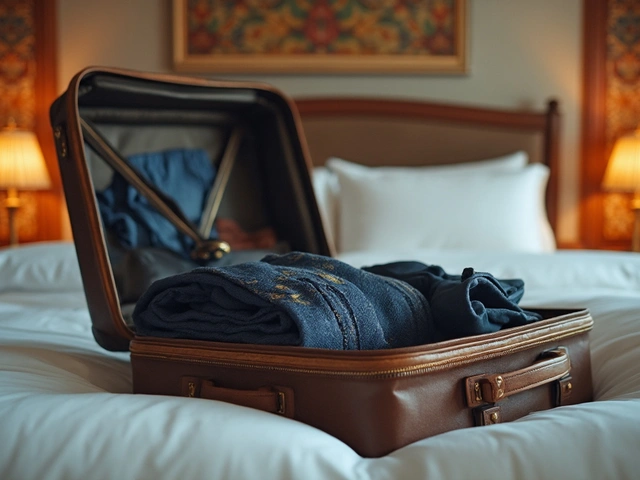The Blue Mosque in Istanbul is more than just an Insta-worthy spot—it’s an active place of worship and a key piece of the city’s identity. Whether you walk over from Fatih on a Sunday with your kids, or pop in on your lunch break from Sirkeci, you’ll want to get the details right. Locals and long-time expats know a few tricks, but first-time visitors often miss practical stuff—like the fact that there’s usually a line for free headscarves near the side entrance on Sultanahmet Square.
If you’re coming from a neighborhood like Kadıköy or Şişli, dress codes may feel stricter than your average evening by the Bosphorus. Shoulders, knees, and sometimes ankles need covering, and yes, even on hot summer afternoons. Guys: leave shorts for the beach at Florya. Gals: a lightweight scarf and loose pants will get you through just fine. Most frequent visitors stash a foldable scarf in their tote, or grab a bright blue one from the desk out front. Shoes off before you step onto the carpet—the plastic bags for shoes aren't just for show; locals use them too since putting dirty soles inside your bag is a no-go.
- Dress Code Demystified: Attire That Works
- What to Expect at the Entrance
- Inside the Blue Mosque: Dos and Don’ts
- Local Traditions and Insider Tips
Dress Code Demystified: Attire That Works
Walking into the Blue Mosque comes with a dress code. This isn’t just tradition—it’s enforced daily by staff, especially at main visitor hours. The rules aren’t about fashion; they’re about respect. This applies to everyone: locals, tourists, even school groups from Üsküdar.
For women, your head needs to be covered with a scarf. Shoulders, upper arms, and knees? All must stay hidden. Maxi skirts, loose trousers, or even gym leggings under a tunic? No problem. Bringing your scarf saves time and avoids the occasional queue for loaners—though those blue wraps near the ablution fountain are always a backup.
Men, shorts above the knee are out. T-shirts are fine, but sleeveless isn’t. Flip-flops are practical in summer, but socks are a good call if you’re grossed out by the idea of bare feet on public carpets.
- Cover your shoulders and knees—no exceptions, even if it’s 35°C and humid after a ferry ride from Beşiktaş.
- Women: a scarf for your hair and modest clothes—flowy summer dresses can work if you pair with tights or leggings.
- Men: skip the shorts and sleeveless tops. Go with light, breathable cotton pants.
- If you forget, you’ll be handed loan clothing (skirts, shawls, sometimes a poncho) free of charge, but you’ll want your own for comfort.
Here’s what to expect at the mosque entrance, especially on busy weekends:
| Clothing Item | Required? | Alternative Offered on Site? |
|---|---|---|
| Headscarf (for women) | Yes | Yes (free, blue scarf) |
| Long trousers/skirt | Yes (for both) | Yes (wrap skirts) |
| Long sleeves | Yes | Yes (shawls) |
| Socks | Recommended | No |
Children under 12 are usually exempt, but it doesn’t hurt to dress them up to fit the tone—especially on Fridays or Eid. Most regulars agree that blending in isn’t about blending away, it shows you’re tuned in to Istanbul’s local rhythm. If you’re ever unsure, look to the elder women who live nearby—they know the dress code better than anyone.
What to Expect at the Entrance
The outside of the Blue Mosque is usually buzzing, especially in spring and summer. Don’t be surprised if the area in front—right off Sultanahmet Square—looks like a cross between a schoolyard and a travel fair, packed with visitors, local families, and tour guides holding up little flags. There’s a separate line for non-Muslim visitors, and it can get long around midday (especially weekends and during Eid), so plan for a wait if you show up during peak hours.
Security at the *Blue Mosque* is friendly but thorough. Expect bag checks like at most Turkish historic sites. Large backpacks or suitcases aren’t allowed inside; keep it small, or use one of the nearby left-luggage services on Divan Yolu Avenue. Entrance is free, but a donation box near the shoe racks sees lots of action—locals usually drop in a few lira on the way out.
You’ll hit the shoe off point before you know it. Watch for signs in Turkish and English and plenty of staff, often in blue vests, who’re used to helping out. Grab a shoe cover bag—they’re stacked in plastic bins right next to the racks. Everyone, including locals, goes barefoot or in socks from here. There’s a polite, almost unspoken system: shoes in bag, bag in hand or cubby, move along.
If you forgot a scarf or showed up in tough-to-fix clothes, there’s a dedicated stand near the women’s side entrance. The mosque provides loaner scarves and wraps for free. Just return them before you leave. Look for volunteers helping out, mostly students from local universities or neighborhood associations.
"We see thousands of people a day, and most just want to do the right thing. Our volunteers are here to make sure everyone feels comfortable and knows what to do," says Ayşe Demirtaş, a volunteer coordinator with the Blue Mosque’s visitor service.
It all moves pretty quickly. Here’s how a typical entrance flows for *Istanbul* locals and tourists:
- Line up in the non-Muslim or general visitor queue.
- Bag check by security.
- Shoe removal area—grab a bag, tuck in your shoes, and keep the bag with you.
- Pick up loaner scarf or skirt if needed.
- Follow signs (or staff) toward the main visiting area.
If you’re curious about the numbers, check out the stats below. The mosque tops several lists for the most-visited spot in the city:
| Month | Average Daily Visitors |
|---|---|
| April | 21,000 |
| July | 32,000 |
| November | 15,500 |
The entrance can be a tourist circus, especially after cruise ships dock in Karaköy, but the staff is well-trained and patient. For the smoothest visit, aim for early morning (before 9 am) or late afternoon, just after prayer. Locals often time their visits to avoid the biggest crowds and breeze right through.
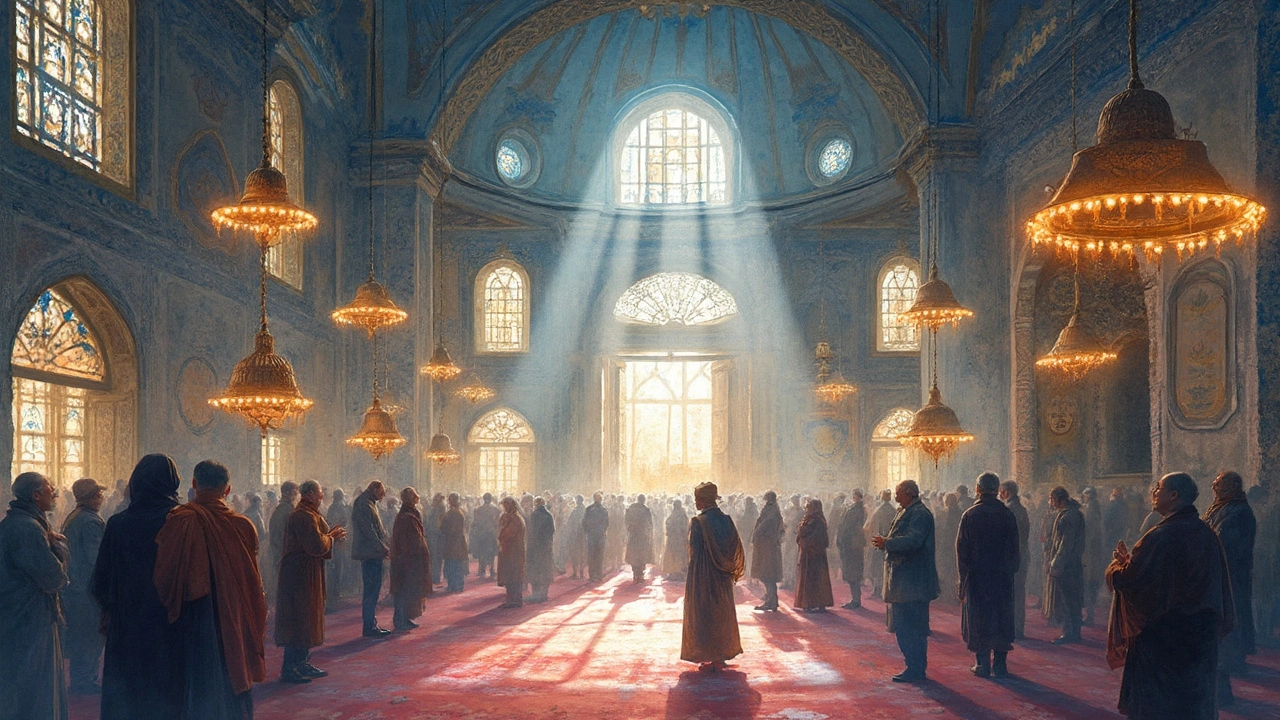
Inside the Blue Mosque: Dos and Don’ts
Right after you step onto the carpets, it’s a good idea to pause and look around before you do anything else. You’ll notice locals moving quietly, sometimes pausing for a quick prayer. Istanbul’s Blue Mosque remains open for worship throughout the day, which means respectful behavior isn’t just a rule—it’s the culture here.
- Blue Mosque is a working mosque, and five daily prayer times are the big rhythm-setters. Non-Muslim visitors can’t enter during prayer for about 30 minutes at midday—especially on Fridays, when crowds spill outside the main doors. Check the nearby signboard for exact prayer times that day.
- Keep your phone silent. Locals glance sideways when a ringtone shatters the peace, and the security staff will gently let you know if you forget.
- Photography is fine—just avoid flash and watch where you point your camera. Never snap photos of people praying or security. Locals often pose in front of the İznik tiles and the grand chandeliers, but always check it’s not in the direction of the mihrab (the big niche facing Mecca).
- Whisper if you want to talk. Regulars keep conversations short and quiet, and families nudge kids to use inside voices. If you’re visiting with children like mine (Selin and Emre love counting the stained glass windows), steer them clear of prayer areas and set expectations at the entrance.
Got a backpack? Wear it in front or stow it off to the side to avoid bumping into people during busy hours. Eating, drinking, or chewing gum isn’t just frowned upon—it’s not allowed at all.
Here’s what security and regulars see most often and what works best:
| Behavior | Okay or Not? | Typical Local Reaction |
|---|---|---|
| Talking on the phone | Not okay | Staff might intervene |
| Sitting on mosque carpet (not during prayer) | Okay | No problem—just sit quietly |
| Touching/taking tiles or relics | Not okay | You may get a warning |
| Posing for quick, respectful photos | Okay | Locals do it, too |
One thing that surprises newcomers—the air can feel cool and a bit humid, especially in winter, since shoes are off. Bring socks and maybe a small pack of tissues if you have kids prone to sitting on the floor. You’ll blend in better, and leave with everyone happy—including the mosque caretakers who work hard to keep the place beautiful.
Local Traditions and Insider Tips
If you want to blend in at the Blue Mosque, there are a few local habits that regulars stick to—sometimes almost automatically. First up, Fridays are crowded. That’s the main prayer day. Try to visit on a weekday if you want a quieter experience. If you come just after the ezan (call to prayer), you’ll see a steady stream of worshippers. It’s cool to watch from outside but step back and give them space if you’re around the doorways.
Turkish people usually greet the mosque with a whisper or a nod, not loud chatter. No one expects complete silence, especially when school groups roll through, but people keep voices low, and kids are nudged to walk, not run. If you’re visiting with children, tell them it’s a space people treat gently—local families often say “sessiz ol” (“be quiet”) in soft tones.
- Photos are fine but be quick and discreet. Tripods are a no—security might stop you.
- Stay behind the partition screens during prayer times—these mark the section open to tourists.
- Bags and backpacks go over your shoulder; never set them down in the middle of pathways.
- If you use a headscarf provided by the mosque, drop it in the return bin outside—they wash them all the time, but it keeps things moving.
One fun fact: locals take breaks at the outer courtyard’s benches, especially under the plane trees near Sultanahmet Park. It’s a top spot for grabbing a simit (that sesame bread ring you see everywhere) from Galata Simitçisi across the tram line and people-watching. Vendors near the mosque sell small bottles of rosewater, which is a tradition for a quick hand freshen-up before prayer.
Here’s some handy data about peak visiting times (based on ticket counter numbers shared last year):
| Day | Peak Hours | Visitor Count* |
|---|---|---|
| Monday | 11:00-13:00 | 6,500 |
| Friday | 12:00-16:00 | 13,200 |
| Saturday | 10:00-14:00 | 11,000 |
*Count includes international visitors and Istanbul residents (2024 numbers).
And hey, when you say goodbye to the mosque, a simple “teşekkürler” to the staff goes a long way. Most try to answer questions and share a smile—they’re used to the world showing up at their door every day.
